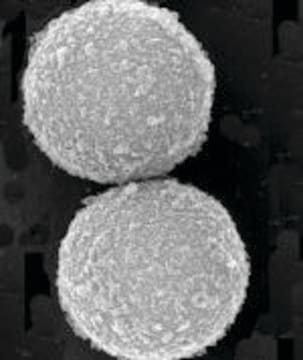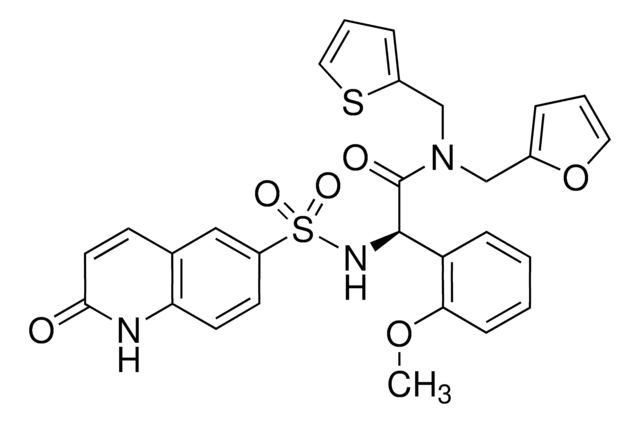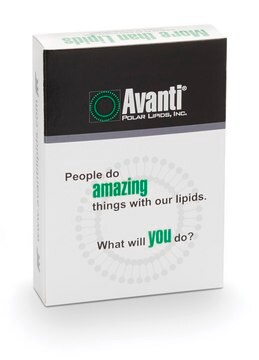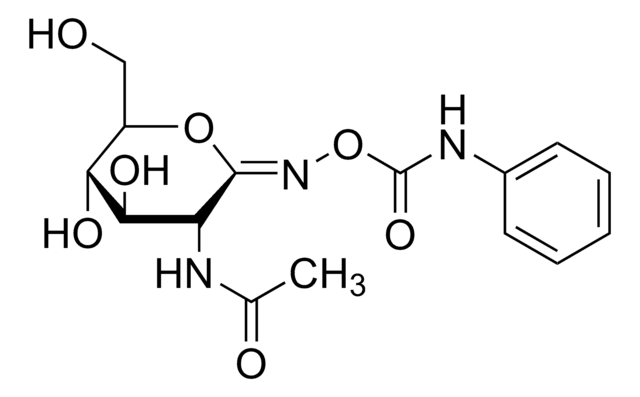MABE1094
Anti-Cdx1 Antibody, clone 123a
clone C, from mouse
Sinônimo(s):
Homeobox protein CDX-1, Caudal-type homeobox protein 1
About This Item
Produtos recomendados
fonte biológica
mouse
Nível de qualidade
forma do anticorpo
purified immunoglobulin
tipo de produto de anticorpo
primary antibodies
clone
C, monoclonal
reatividade de espécies
human
técnica(s)
ChIP: suitable
immunocytochemistry: suitable
western blot: suitable
Isotipo
IgG1κ
nº de adesão NCBI
nº de adesão UniProt
Condições de expedição
wet ice
modificação pós-traducional do alvo
unmodified
Informações sobre genes
human ... CDX1(1044)
Descrição geral
Especificidade
Imunogênio
Aplicação
Epigenetics & Nuclear Function
Transcription Factors
Western Blotting Analysis: A representative lot detected the target band in CDX1-expressing colorectal cancer (CRC) cells (HT55, LS174T, RCM-1, SK-CO-1), but not in non-Cdx1-expressing CRC (DLD-1, HCT116, SW48, RKO) cells (Chan, C.W., et al. (2009). Proc. Natl. Acad. Sci .U. S. A. 106(6):1936-1941).
Western Blotting Analysis: A representative lot detected the endogenously expressed CDX1 in HCT116 human colorectal cancer (CRC) cells. Antibody blocking with the immunogen peptide, but not with a C-terminal peptide, prevented the target band detection (Chan, C.W., et al. (2009). Proc. Natl. Acad. Sci .U. S. A. 106(6):1936-1941).
Immunocytochemistry Analysis: A representative lot detected a downregulated CDX1 immunoreactivity among SW1222 and LS180 colorectal cancer (RC) cell colonies following prolyl-hydrolase inhibitor DMOG (Cat. No. 400091) treatment as a result of enhanced normoxia HIF-α transcription activity (Ashley, N., et al. (2013). Cancer Res. 73(18):5798-5809).
Immunocytochemistry Analysis: A representative lot detected a high expression of the enterocyte differentiation marker CDX1 among colonies formed from colorectal cancer (RC) cells (SW1222, LS180, CCK-81) under normoxia condition, while a much lower Cdx1 immunostaining was seen among the colonies formed under hypoxia condition (Yeung, T.M., et al. (2011). Proc. Natl. Acad. Sci. U. S. A. 108(11):4382-4387).
Immunocytochemistry Analysis: A representative lot immunostained LS174T and CDX1-transfected HCT116 colorectal cancer (CRC) cells. No staining was seen among mock-transfected HCT116 cells or CDX1 shRNA-transfected LS174T cells (Chan, C.W., et al. (2009). Proc. Natl. Acad. Sci. U. S. A. 106(6):1936-1941).
Chromatin Immunoprecipitation ChIP) Analysis: A representative lot detected CDX1 occupancy at the KRT20 promoter site using chromatin preparation from HT55 human colorectal cancer (CRC) cells (Chan, C.W., et al. (2009). Proc. Natl. Acad. Sci. U. S. A. 106(6):1936-1941).
Qualidade
Western Blotting Analysis: 1.0 µg/mL of this antibody detected Cdx1 in 10 µg of human Caco-2 colorectal cancer cell lysate.
Descrição-alvo
forma física
Armazenamento e estabilidade
Outras notas
Exoneração de responsabilidade
Não está encontrando o produto certo?
Experimente o nosso Ferramenta de seleção de produtos.
Código de classe de armazenamento
12 - Non Combustible Liquids
Classe de risco de água (WGK)
WGK 1
Ponto de fulgor (°F)
Not applicable
Ponto de fulgor (°C)
Not applicable
Certificados de análise (COA)
Busque Certificados de análise (COA) digitando o Número do Lote do produto. Os números de lote e remessa podem ser encontrados no rótulo de um produto após a palavra “Lot” ou “Batch”.
Já possui este produto?
Encontre a documentação dos produtos que você adquiriu recentemente na biblioteca de documentos.
Nossa equipe de cientistas tem experiência em todas as áreas de pesquisa, incluindo Life Sciences, ciência de materiais, síntese química, cromatografia, química analítica e muitas outras.
Entre em contato com a assistência técnica








